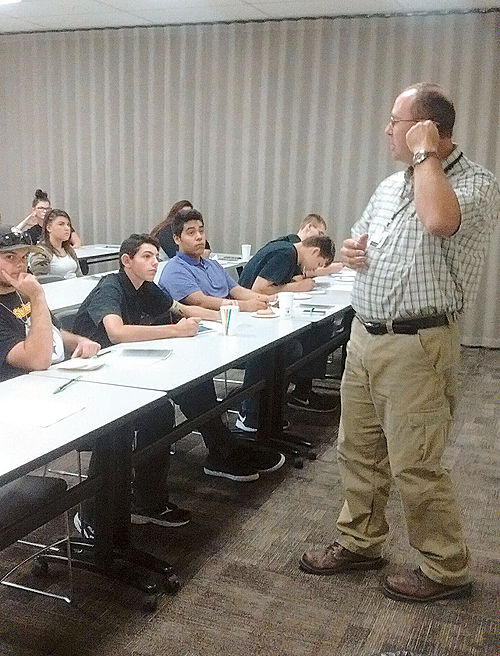Students at Pinnacle High School started the first week of the the Hope Project, a collaborative effort of local businesses, government and educational agencies designed to combat intergenerational poverty by preparing students to succeed in marketable occupations.
They attended seminars taught by Mark Holyoak, Castleview Hospital CEO, Robert Powell, physical therapist and Workforce Services about professional conduct and medical support jobs. “As I listened I thought, ‘This is an awesome presentation! I wish that every kid in this country could have this information!” said program director Zena Robinson.
Students will attend college classes and then work in a six-week internship. Since healthcare is one of the fastest growing industries, the project organizers decided to focus on preparing students to work in that field.
“There are so many jobs in this field that people don’t think of. Hospitals need employees trained to work in medical records, admissions, the cafeteria, lab, phlebotomy and so many other roles. We will be exploring these and more,” Robinson said.
Other schools across the nation have tried this program with both success and failure. To combat the challenge, Pinnacle is implementing a significant amount of training about professionalism at the beginning of the program. “It is a holistic approach,” Robinson added.
A key to the future
Utah State University-Eastern Chancellor Joe Peterson believes that the Hope Project will be worthwhile. He said, “I’m very very excited about this collaboration. I think that projects of this sort are the key to our future in Southeastern Utah. We need to get a number of these career and technical education programs going for high school students.”
One signal of future success is the many organizations that are working to create an effective program. Peterson feels that collaboration with many agencies creates the optimal environment, “A lot of our really good academic programs have one foot in secondary school and one in higher education. This is a prime example of how the pathway to a healthcare career starts in high school. Working with the hospital and our secondary partners is a good way to advance our young people towards quality jobs.”
Twelve percent of Pinnacle students face the challenge of intergenerational poverty. “In an effort to change that, we need to change the mindset of students. We need to train them to be employable,” Robinson explained
Juniors and seniors at Pinnacle are eligible for the Hope Project. Grant funds help students cover the cost of concurrent enrollment, books and the additional support they receive. As a bonus, students will be paid during their internships. Currently, 19 students are in the program. There are still openings both at Pinnacle High and in the program. The grant was awarded for this year.
The effort is funded by a Talent Ready Grant and made possible through collaboration between the school, USU Eastern, Gear Up, Trio, Castleview Hospital, Workforce Education and Workforce Services.
Peterson said organizers hope to create more opportunities for workforce preparation both in different occupations and with other schools.

